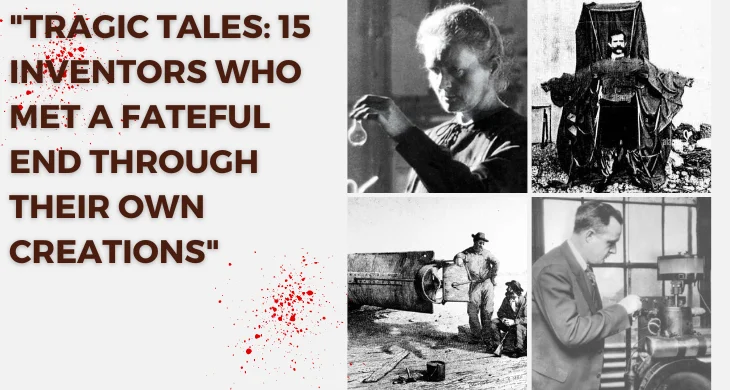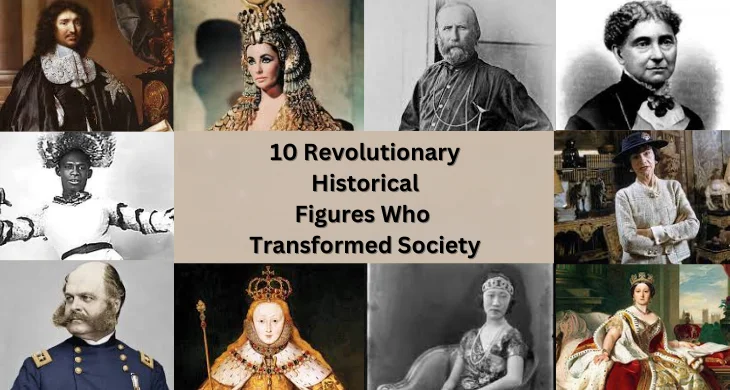While there have been instances where inventors have faced accidents or mishaps related to their own inventions ,it is not accurate to compile a definitive list of inventors specifically “killed” by their own creations. However ,I can provide you with some examples of inventors who Suffered unfortunate incidents related to their inventions. Please note that these examples do not imply that the inventors were directly responsible for their deaths ,as Accidents can occur even with well-designed inventions. Here are 15 notable cases:
Marie Curie (1867-1934):
Marie Curie, a pioneering physicist and chemist ,made groundbreaking discoveries in the field of radioactivity. Alongside her husband ,Pierre Curie ,she developed techniques for isolating radioactive isotopes and conducted extensive research on their properties. However ,her relentless exposure to radiation eventually led to her demise, resulting in leukemia. Curie’s remarkable contributions to science and her unfortunate death serve as a reminder of the dangers associated with working with radioactive materials.
Horace Lawson Hunley (1823-1863):
Hunley was an engineer who developed the H.L. Hunley ,the first combat submarine used in the American Civil War. Unfortunately ,he lost his life along with his crew during a test run.
Franz Reichelt (1879-1912):
Franz Reichelt, an Austrian-born tailor ,harbored a passion for aviation and sought to create a device that would enable individuals to glide safely to the ground in the event of a building fire. He designed a parachute suit and conducted numerous tests to ensure its functionality. However ,during his ill-fated attempt to demonstrate the suit’s effectiveness by jumping from the Eiffel Tower ,the parachute failed to deploy properly. Tragically ,Reichelt met his untimely demise in this failed experiment.
William Bullock (1813-1867):
Bullock, an American inventor, developed an improved printing press. He suffered a severe foot injury while installing a new machine and died due to complications from the injury.
Thomas Midgley Jr. (1889-1944):
Thomas Midgley Jr. ,an American Engineer and Chemist ,Played a significant role in the development of leaded gasoline and the Chlorofluorocarbon (CFC) compound. While his inventions brought immense benefits to society at the time ,they had severe environmental consequences. Midgley Inadvertently inhaled toxic fumes from his own invention ,Tetraethyl lead ,which led to his death due to Complications arising from polio.
Max Valier (1895-1930):
Valier, an Austrian engineer, worked on rocketry and propulsion systems. He died in a rocket motor explosion during a test.
Karel Soucek (1947-1985):
Soucek, a Canadian stuntman and inventor, created a specialized barrel for going over Niagara Falls. After a successful barrel drop, he died while testing a different design in the Houston Astrodome.
Otto Lilienthal (1848-1896):
Otto Lilienthal, a German aviation pioneer ,dedicated his life to the pursuit of human flight. He conducted extensive experiments with gliders ,making significant Contributions to the field of aeronautics. Tragically, during one of his glider flights ,Lilienthal lost control and crashed ,suffering severe spinal injuries. Despite medical efforts ,he succumbed to his injuries the following day. Lilienthal’s relentless pursuit of flight and his subsequent demise paved the way for future advancements in aviation.
Henry Smolinski (1941-1973):
Smolinski ,an American engineer ,co-founded the company Advanced Vehicle Engineers. He died during a test flight of a flying car prototype, which experienced a structural failure.
Michael Dacre (died 2009):
Dacre, a British inventor, designed and built the FlyNano, an electric-powered ultralight aircraft. He died in a FlyNano crash during testing.

Ques: How many inventors have been killed by their own invention?
Ans: Throughout history, there have been numerous inventors who met their demise due to their own creations. While it is challenging to determine an exact number, the list includes individuals from various fields of innovation.
Ques: Were these inventors aware of the dangers associated with their inventions?
Ans: In many cases, inventors were aware of the risks involved but were driven by their passion for discovery. Some miscalculations, unforeseen circumstances, or simple accidents led to fatal outcomes.
Ques: Can we learn from these tragedies to prevent future accidents?
Ans: Absolutely. The stories of inventors killed by their own invention serve as important lessons for future generations. They highlight the need for thorough safety protocols, risk assessments, and continuous monitoring when working with innovative technologies.
Ques: Are there any modern examples of inventors killed by their own invention?
Ans: Yes, the risks of innovation persist even in modern times. While safety standards have improved significantly, there have been cases of inventors suffering fatal accidents during the testing or implementation of their creations.
Ques: Have any of these inventors received posthumous recognition for their contributions?
Ans: Many of these inventors have been celebrated for their remarkable contributions to their respective fields. While their untimely deaths were tragic, their inventions often paved the way for future advancements and improved safety measures.
Ques: Are there any ongoing efforts to honor the memory of these inventors?
Ans: Various organizations and institutions acknowledge the contributions and sacrifices of these inventors. Memorials, exhibitions, and educational initiatives serve to remember their legacies and the important lessons they teach us.
Conclusion
These examples illustrate instances where inventors faced tragic consequences related to their inventions. However ,it’s important to note that accidents and unforeseen circumstances can occur in any field, and attributing the inventors’ deaths solely to their own creations would be an oversimplification.


